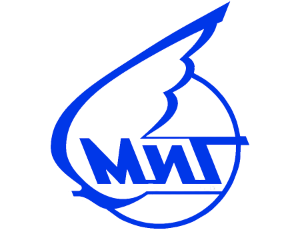Polikarpov I-15 Tskb-3
Chaika "Seagull"
|
|
||||||||||||||||||||||||||
|---|---|---|---|---|---|---|---|---|---|---|---|---|---|---|---|---|---|---|---|---|---|---|---|---|---|---|---|
.
History Polikarpov Design Bureau (design bureau)
Polikarpov I-15 Tskb-3
Chaika "Seagull"

The Polikarpov I-15 (Russian: И-15) was a Soviet biplane fighter aircraft of the 1930s. Nicknamed Chaika (Russian: Чайка, "Seagull") because of its gulled upper wings, it was operated in large numbers by the Soviet Air Force, and together with the Polikarpov I-16 monoplane, was one of the standard fighters of the Spanish Republicans during the Spanish Civil War, where it was called Chato (snub-nose)
Design and development
[edit]

The design for the 14th fighter for the VVS, the I-14, started as an advanced (for the era) monoplane under the direction of Andrei Tupolev. He grew concerned that the design would not mature, and ordered two backup biplane designs as the I-14A and B just to be safe. Polikarpov had just been released from prison in August 1932, and was handed the I-14A project. When both the I-14 and I-14A were ordered into production, Polikarpov's design, a development of the I-5 fighter became the famous I-15.
The first flight was made in October 1933 with V.P. Chkalov at the controls, powered by an imported Wright R-1820 Cyclone engine. The I-15, also known by its development name TsKB-3, was a small biplane fighter with a gulled upper wing. The single bay wings were of wooden construction, while the fuselage was of mixed steel and duralumin construction, with a fabric covered rear fuselage
Photo Gallery
Polikarpov Design Bureau (design bureau)
Polikarpov I-15 Tskb-3
Chaika
NATO reporting name "Seagull"


Polikarpov I-15 Tskb-3 Chaika
NATO reporting name "Seagull"
General Info
-
-
-
- Crew: One
- Length: 6.10 m (tail up)
- Upper wingspan: 9.75 m
- Lower wingspan: 7.50 m
- Height: 2.20 m (tail down)
-
-
Powerplant
-
-
- Empty weight: 1,012 kg
- Gross weight: 1,385 kg
- Max takeoff weight: 1,689 kg
- Fuel capacity: 260 L
- Powerplant: 1 × Shvetsov M-25 9-cylinder air-cooled radial piston engine, 520 kW (700 hp) at 2,300 m
-
-
Performance
- Maximum speed: 367 km/h at 3,000 m
- Cruise speed: 285 km/h (177 mph, 154 kn) at 2,000 m (6,600 ft) (max. continuous cruise)
- Range: 510 km (320 mi, 280 nmi)
- Service ceiling: 9,800 m
.
Links to Youtube & Others
World War II
More than 1,000 I-15bis fighters were still in Soviet use during the German invasion when the biplane was employed in the ground attack role. Many were destroyed in the opening hours of the invasion sitting in neat rows on their runways.[6] By November 1943, all examples still in service had been relegated to second line duties
Polikarpov I-15 Tskb-3 Chaika "Seagull"
The I-15 was used extensively in combat by the Republicans in the Spanish Civil War and proved to be one of the best fighter biplanes of its time
Youtube Link
On 16 November, while dogfighting with Fiat CR.32s over Madrid, future ace Rychagov was shot down [19] and four days later the number of combat-ready Polikarpov in the central area had fallen to 15 aircraft: seven had been lost in combat, two had force-landed and one was undergoing repair.










.png)



